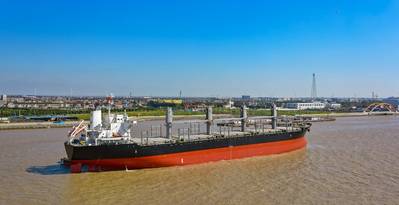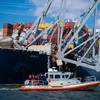China's determination to tackle its choking pollution by cutting steel and coal capacity should be a long-term negative for exporters of iron ore and coal to the world's biggest commodity importer, but the reality is likely to be far more nuanced.
"We will make our skies blue again," Premier Li Keqiang told the opening of parliament on Sunday.
That's an unequivocal statement that gives political impetus to Beijing's plans to shutter more excess steel and coal capacity.
The policy-making National Development and Reform Commission said in a report to parliament that it aims to cut steel capacity by 50 million tonnes this year and coal output by more than 150 million tonnes.
These targets form part of an overall plan to cut up to 150 million tonnes of steel capacity and 800 million tonnes of coal by 2020.
The government also announced it wants to cut energy consumption per capita by 3.4 percent and curb carbon intensity by 4 percent in 2017.
Assuming that the actual capacity closures achieved are in line with the targets, where does that leave imports of iron ore and coal?
For iron ore, much will depend on whether capacity cuts actually result in lower output, or whether production is maintained at above 800 million tonnes a year, as happened in 2016.
Last year, steel capacity cuts were mainly in older, less efficient mills, many of them already offline.
Steel output actually rose 1.2 percent last year to 808.4 million tonnes, resulting in higher imports of iron ore as many domestic mines remained shut given the weak prices of prior years.
The rising iron ore price may well tempt domestic mines to re-open, but this is far from certain and may not happen to an extent that would force down imports.
The spot price in China as assessed by Metal Bulletin eased slightly at the end of last week, ending at $91.32 a tonne on Friday, but this is still almost three times what it was at the end of 2015.
The strong rally of 2016, which has extended so far in 2017, was built largely around higher steel prices, which in turn were boosted by infrastructure and construction spending as Beijing turned on the spending taps to keep the economy humming.
The government wants economic growth of 6.5 percent in 2017, slightly down from the 6.7 percent achieved last year, when the target was 6.5-7.0 percent.
But it also appears that the government will again try to emphasise growth in consumption, which may limit demand growth for steel.
With steady steel output a likely best-case scenario for 2017, the possibility of domestic iron ore mines restarting and record high port inventories of imported iron ore, it seems hard to construct a case for the price to continue rallying.
The main positive for imported iron ore is that it's considerably higher quality than domestic output, and therefore requires less coal-fired energy to convert it into steel.
While it's possible to process domestic iron ore to reach levels around 62 percent, a quality common for imported ore, this is a more costly process, which will undermine the economics of re-opening domestic mines.
Coal Imports Positive, For Now
For coal, quality becomes a factor as well.
If the government is successful in cutting coal output, it's likely that power stations, steel mills and other industrial users will have turn to imports to ensure they have adequate supplies. Imports are also likely to be more competitive as supply restrictions push up the price of domestic grades.
It's possible that Beijing will cut coal output faster than it can arrange alternative power sources, such as natural gas generation for electricity and heating for buildings.
Imported coal could meet some of the shortfall, especially in the industrial southeast of China, which has a lesser pollution problem than the northeast, which is home to the bulk of the steel industry.
Coal imports grew 25.2 percent in 2016 to 255.51 million tonnes, allowing China to reclaim its status as the world's biggest importer of the fuel from India.
The big winner last year was Indonesia, with a 38.1 percent surge in imports by China, much of that being low-rank coal.
This may be at risk from stricter controls on pollution, although it's likely that Indonesian cargoes will remain popular for blending with domestic supplies.
But it's also likely that higher-grade coal from suppliers such as Australia will see increased demand, especially if China does halt imports from its neighbour North Korea as part of international efforts to contain the isolated state's nuclear weapons programme.
North Korea's anthracite coal is mainly used for sintering, a stage in steel-making prior to using the blast furnace, and in the manufacture of ceramics.
While it would be possible for the Chinese domestic coal industry to replace the 22.5 million tonnes imported last year from North Korea, it may struggle if Beijing places restrictions on local production.
Overall, it's poised to be another good year for coal exporters to China, although longer term the picture becomes less rosy as ultimately Beijing appears committed to using less of the polluting fuel.
(By Clyde Russell; Editing by Richard Pullin)

















